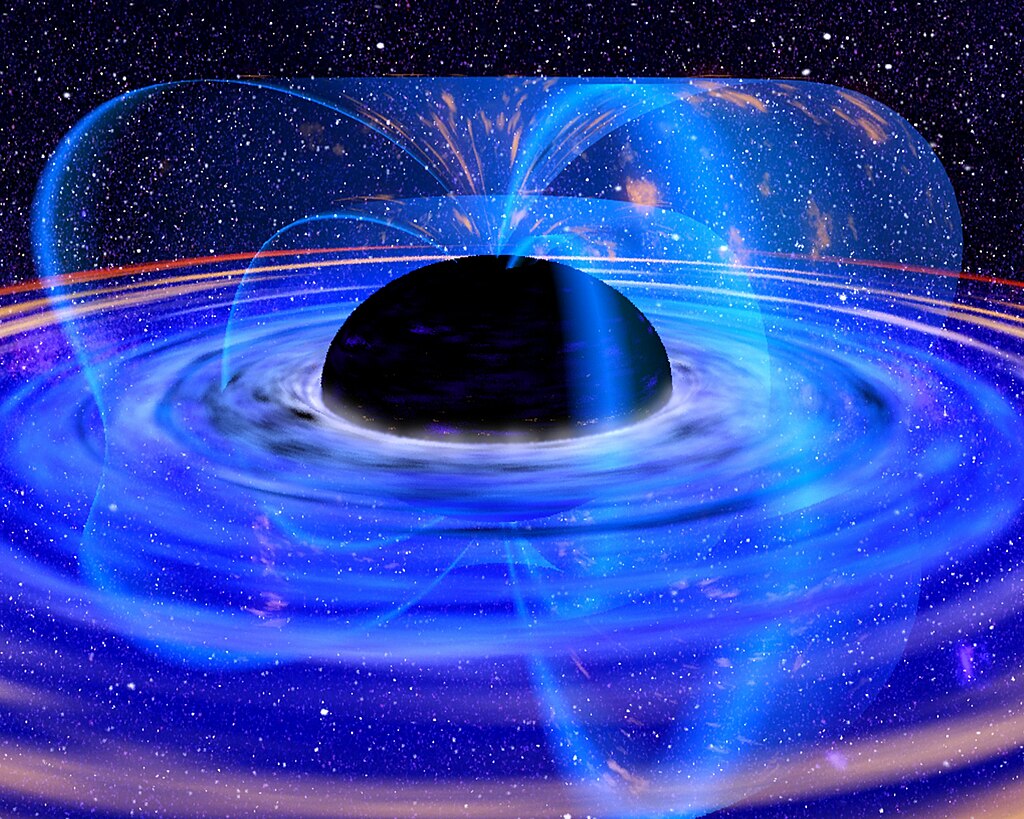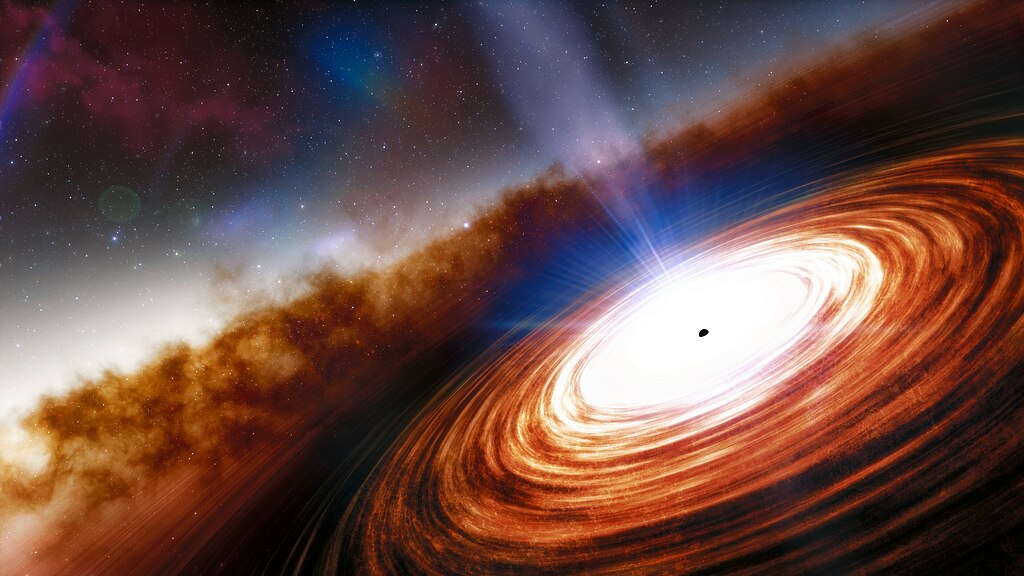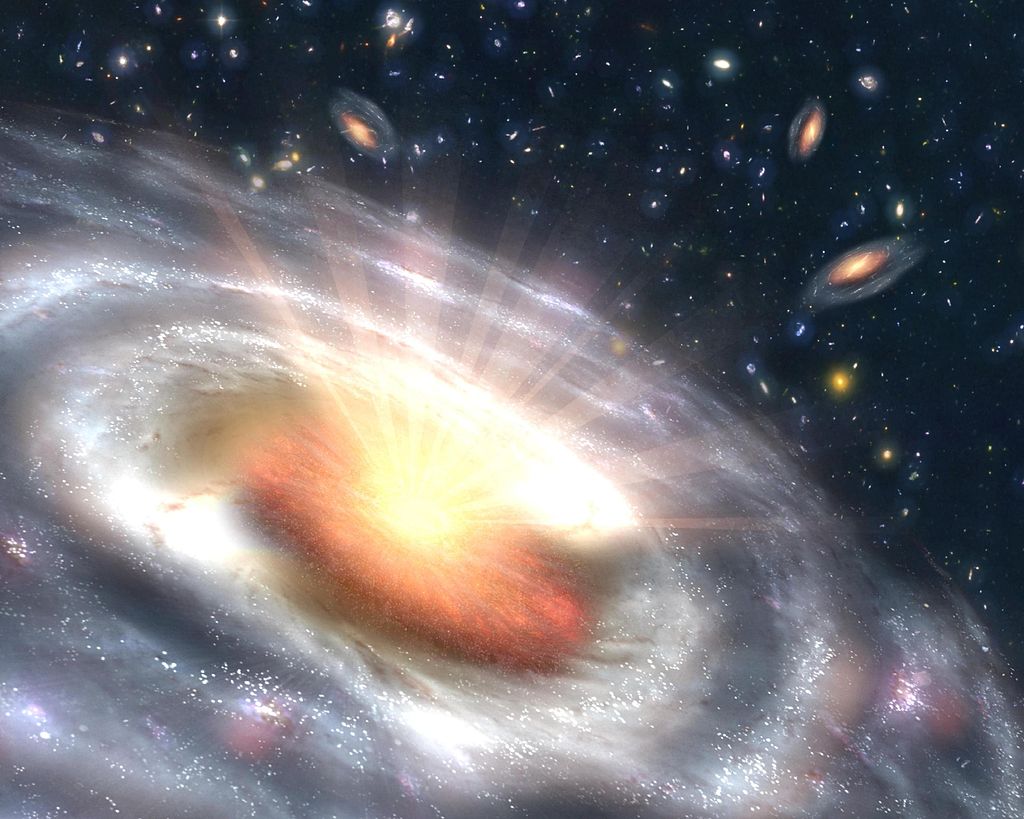In a significant first for the field of astronomy, the James Webb Space Telescope was able to detect starlight from distant galaxies with quasars. A quasar, for those unaware, is extremely bright but since they are powered by black holes, it is rare that we can ever detect them.
It is even harder to see starlight in galaxies where major black holes are present. Mostly because black holes are literally blocking all light from escaping for us to see. The James Webb Space Telescope, however, uses specialized equipment that allows it to see things other telescopes never could.
The JWST revealed that four of these galaxies are massive, compact, and perhaps disc-shaped. During the JWST First Light Meeting, the astronomers discussed this data. Many feel that studying the galaxies found could help to solve a few mysteries of how black holes in the early universe were able to grow so large in such a fast period of time.
MIT Astrophysicist, Minghao Yue, discussed the James Webb Telescope’s findings as well as the impact of its infrared eyes, saying:
“Ever since the discovery of [distant] quasars, there have been studies trying to detect their host galaxies. This opens up brand new windows towards finally understanding luminous quasars and their host galaxies.”
Quasars And Black Holes

Many will say that Quasars are black holes. However, they are technically part of the active galactic nucleus group. AGNs are also sometimes known as quasi-stellar objects. Any emission from a Quasar, however, is powered by some type of supermassive black hole.
This is why many will claim a Quasar is a black hole. They all have one, but they are much more than a simple black hole.
People assume that black holes are where things go to die, and this might be partially true. The gravitational level of any black hole is immense but the level of a supermassive black hole is off the charts. This is why they can suck in planets and even stars.
However, black holes also seem to be giving life and helping galaxies stay together around them. Every major galaxy has a supermassive black hole in the middle of it, including our very own Milky Way Galaxy.
Quasars are known for feeding so furiously that material they eat is able to heat up to incredibly hot temperatures. This allows them to shine brighter than even other stars in the galaxy around them. In fact, they are so bright and distant that each one can appear as a single, starlike point of light.
It was precisely this knowledge of quasars that helped astronomers see distant galaxies with quasars for the first time. Two independent groups used the starlike quality to erase the quasar’s glow from images of their galaxies. Think of it like a form of Adobe Photoshop where you remove stuff you don’t want.
The Important Findings

Minghao Yue and their colleagues used the James Webb Space Telescope to observe six different quasar-hosting galaxies. At the same time, Xuheng Ding & colleagues at the Kavli Institute for Physics and Mathematics of the Universe in Tokyo, Japan used the telescope to check out another pair of quasars.
They found that the light from all of the quasars emitted more than 12.8 billion years ago. For context, this is less than a billion years after the Big Bang was said to occur.
Both teams used actual stars in the images to simulate the starlike shapes of the quasars. Then, they subtracted the simulated quasar from the image of each whole galaxy. This is what allowed them to only have starlight remaining.
Ding’s team was able to see both of their galaxies while Yue’s team was able to see two of the six they looked into. All the measured galaxies appear to be less than a tenth as wide as our Milky Way Galaxy. They measured between 2,600 to 8,000 lightyears across.
Two of the galaxies Yue’s team observed contain were estimated to have enough stars to make up between 10 billion to 100 billion the mass of the Sun. Ding’s team found their pair weighed in at around 25 billion & 63 billion solar masses.
Of course, these masses are compared with the stars in the Milky Way, which has around 60 billion times the mass of the Sun. That is relatively surprising, as it is considered massive to be from so early in the universe’s history.
A Stellar Rule Was Broken Here

It should be noted that a stellar rule was broken here. Locally, galaxies usually split their mass between stars and black holes in a predictable way. Essentially, the bigger the galaxy’s central supermassive black hole is, the more stars the galaxy will have.
However, these galaxies are packing more mass into the black hole than their amount of stars should allow. Yue claimed that these luminous quasars really are over-massive.
Mass calculations could prove to be overestimated, according to Paul Shapiro of the University of Texas at Austin. While not involved in either study, he claimed that converting the light that the telescope saw rests on assumptions about how many stars of various masses a galaxy has.
Furthermore, modern galaxies have more dim, lightweight stars than bright, hefty ones. The brightest stars astronomers see are just a taste of what could be there. However, Shapiro believes that while that is a rule today, this might not have been the case only 800 million years after the Big Bang. He claimed:
“You’re observing the tail and inferring the dog. If there were a mass distribution that favors high-mass stars, you could be significantly overestimating the mass associated with the light.”
Ding claimed that these first few quasar hosts are just the beginning. They aren’t wrong, as the James Webb Telescope is scheduled to observe 10 more in the future. Some of them are even further away. Ding went on to say:
“We don’t know how black holes can be so big in the early universe. You need to understand the environment of this monster, how it can collect so much matter to it. So knowing the conditions — the mass of the host galaxies, for example — at least then you can say how their local environment is.”
References: